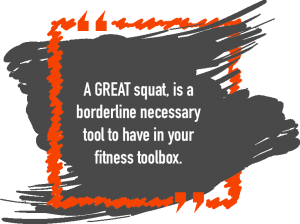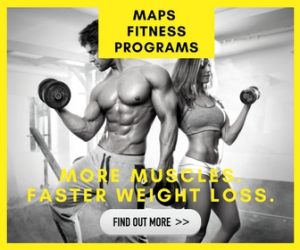
Front Squat vs. Back Squat: Which Is Better For Beginners?
Mar 30, 2018 mindpumpFor all beginner lifters, it is imperative that a priority is placed on solidifying the basic or “core” movement patterns that are aligned with optimal performance, aesthetics, and that have a “functional” carry over to real life. Movement patterns like pushing, pulling, carrying and hinging are high on that short list of “required movement patterns” but when it comes to positioning one movement pattern over the others, the squat is arguably the most important and dynamic.
A GREAT squat, is a borderline necessary tool to have in your fitness toolbox. Not only does it allow for the development of great athleticism and lower body explosive power, it requires a high level of core recruitment, and can be used as one of the best moves for developing an impressive set of “wheels”. When it comes to bang for your buck movements in the gym, the squat may be the best.
There are two primary and fundamental squats that should be in everyone’s repertoire, the Front Squat, and the Back Squat. Which one you master first is dependent on two primary factors:
1. Relative Stability
2. Relative Mobility
These two factors will allow you to feel comfortable under the bar become a truly great squatter. With practice of course. Some issues with many novice lifters, and perhaps you yourself have seen or even felt these are: Inability to maintain tension and stability with a barbell on the back/front rack position (poor stability). Squatting to a depth that is higher then 90 degrees to due to issues of mobility at a main joint (ankle, knee, hip). Having some of the mobility to get deep into a squat but secondary mobility issues, muscular imbalances and motor control issues the occur when doing so (often characterized by the rounding of the lumbar spine or major shift in the angles of the knee and hip.
Addressing things such as those listed above IS IMPERATIVE prior to loading up a barbell and hammering out squats.

So you have the prerequisite mobility and stability down? Great, then your ready to squat! But wait, which squat is better? Well, the answer is simple – whichever one is easiest to do properly when accounting for your current level of stability and mobility AND whichever one lends itself best to your goals. Ideally, one should pursue doing both, as they each have a unique set of benefits. Here are a few notes and considerations for picking the one that is best for you.
Front Squat:
• Generally easier on the back due to the load vector and bar placement.
• Place a greater demand on the upper back musculature.
• Greater overall demand on the core (great way to improve relative stability) NOTE: If you struggle with a barbell, but want to incorporate an anteriorly loaded squat, try a “Goblet Squat”.
• Greater overall demand on the quadriceps.
• Require greater mobility of the thoracic spine, wrist, shoulder, and ankle when compared to the back squat – another reason to begin with the goblet squat.
Back Squat:
• More even distribution of work across the hip, thigh, gluteal, and lumbar regions.
• Better carryover to hip extension movements (especially when using a “Box Squat Variation).
• Allows for greater overall load movement, contributing to larger strength increases.
At the end of the day, the variation that is best for you DEPENDS a lot on your goals. I have my athletes and clients train both. Whether it is in the form of a back squat, front squat, goblet squat, box squat etc. The most important thing is that you are squatting often, and squatting well. Here are two rules for the road.
1. Squat to the lowest depth YOU can whilst maintaining good form. Do not think YOUR body (which is biomechanically unique in many ways) will respond and look the same when squatting compared to other lifters. Work on your mobility, work on your technique and find the “groove” that best fits your anatomy. Oh, wait! Above all, do not squat into pain – there are no badges of honor for taking 315 ass to grass and tweaking something in your lumbar/SI region.
2. Do not sacrifice squat form for quick jumps in load. EVER. That will come with time.
Now, go work on your mobility, stability, and grab a dumbbell, get under a bar – and find the variation that is best for you!
Author: Daniel Matranga
https://twitter.com/dynamic_danny
https://www.instagram.com/dynamic.danny
NASM: CPT, CES, PES, WLS, SFS, WFS, GFS, YES
ACE: TES, OES, and MBS







